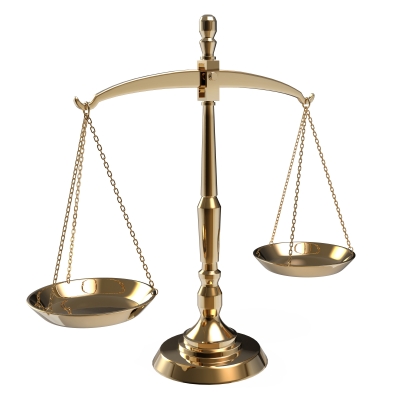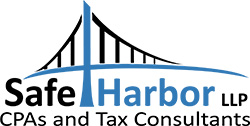April 30, 2013. Executive Summary. FASB has issued new standards for public and private companies on fair value (FV) measurement and disclosures. Many of our San Francisco business clients are inquiring about these new standards, and so we thought a timely blog post would help clarify. The new requirements — found in Accounting Standards Update 2011-04, Fair Value Measurement (Topic 820): Amendments to Achieve Common Fair Value Measurement and Disclosure Requirements in U.S. GAAP and IFRSs — don’t extend the use of FV accounting but provide direction on how it should be applied when already required or permitted. This article discusses how the new standards supersede previous guidance, make three critical clarifications and change certain other requirements.
FASB issues new standards for fair value measurement and disclosures

http://www.freedigitalphotos.net
In conjunction with the International Accounting Standards Board (IASB), the Financial Accounting Standards Board (FASB) on May 12 issued new standards for public and private companies on fair value (FV) measurement and disclosures. Most companies will see little change in how they measure fair value, but they may need to make more extensive disclosures about the processes and assumptions behind those measurements.
The new requirements — found in Accounting Standards Update (ASU) 2011-04, Fair Value Measurement (Topic 820): Amendments to Achieve Common Fair Value Measurement and Disclosure Requirements in U.S. GAAP and IFRSs — don’t extend the use of FV accounting but provide direction on how it should be applied when already required or permitted.
Superseding SFAS 157
The standards set forth in ASU 2011-04 supersede most of the accounting guidance currently found in Topic 820 of FASB’s Accounting Standards Codification and previously known as Statement of Financial Accounting Standards (SFAS) No. 157, Fair Value Measurements. The new standards, however, don’t all represent changed requirements — some are clarifications of existing requirements or wording changes made to align U.S. Generally Accepted Accounting Principles (GAAP) with the corresponding International Financial Reporting Standards (IFRS). Private companies will be exempt from certain new disclosure requirements.
The new standards retain the traditional fair value hierarchy already laid out in Topic 820. The hierarchy identifies three levels of assets and liabilities, with the level of required disclosures essentially increasing as the associated valuations become less reliable:
- Level 1 assets and liabilities are valued according to a quoted price in an active market, generally without any adjustments.
- Level 2 assets and liabilities are valued based on “observable inputs” other than quoted active market prices, including quoted prices for similar assets or liabilities in active markets, quoted prices for identical or similar assets or liabilities in inactive markets, and interest rates and yield curves.
- Level 3 assets and liabilities are valued based on “unobservable inputs,” such as a company’s own estimates and pricing models. These risky and illiquid assets and liabilities are subject to the most expansive disclosure requirements.
3 critical clarifications about measurement and disclosure requirements
The new standards provide three critical clarifications of how to apply the existing FV measurement and disclosure requirements:
- Highest and best use. FV assumes that an asset is put to its “highest and best use.” (For example, a property located on Market Street in San Francisco would best be put to use as a high-end retail outlet, rather than as a manufacturing plant.) The new standards specify that the concept of highest and best use should be applied only when measuring the FV of nonfinancial assets. It isn’t relevant when measuring the FV of financial assets or liabilities, because these items don’t have alternative uses.
- Instruments classified in shareholders’ equity. A company might classify certain instruments — such as equity instruments issued as part of a merger or acquisition — in its shareholders’ equity. According to the new standards, the FV of such an instrument should be measured from the perspective of a market participant that holds the instrument as an asset. This clarification is unlikely to affect most companies’ current practices.
- Disclosures about FV measurements. The new standards make clear that a company must disclose quantitative information about the unobservable inputs used in FV measurements of Level 3 items. Companies will be required to disclose how they measure the value of assets that are difficult to value because they can’t easily be sold in active markets. This could require the disclosure of information like the average weighted cost of capital, as well as a description of how the value could change if an unobservable input changes.
Changing requirements and FASB Fair Value Measurement and Disclosures
The new standards include some changes to the requirements for FV measurements and disclosures. For example, a company that holds a group of financial assets and liabilities is exposed to market risks (for example, interest rate risks) and the credit risk of the counterparties. The new standards allow such a company, such as a San Francisco-based real estate company or restaurant chain that has financial assets to manage cash flow or import/export issues, to measure the FV of those financial instruments on the basis of its net risk exposure, rather than its gross exposure.
In other words, a company whether in San Francisco or elsewhere in the San Francisco Bay Area can measure the FV at the price that would be received to sell a net asset position for a particular risk, or to transfer a net liability position for a particular risk, in a hypothetical orderly transaction. FASB doesn’t expect this to change the way many companies measure their financial assets and liabilities in practice.
In addition, the new standards generally allow companies to apply premiums or discounts to FV measurements to the extent that they’re consistent with the unit of account for the asset or liability and that market participants would consider them in a transaction for the asset or liability. This should affect only measurements for items without an active market for sale — for example, Level 2 or Level 3 items.
Finally, the new standards expand the required disclosure related to FV measurement. For Level 3 items, a company must disclose 1) its valuation processes, and 2) the sensitivity of the measurement to changes in unobservable inputs and any interrelationships between those unobservable inputs. Private companies are exempt from the latter requirement.
For all items, companies must disclose their use of a nonfinancial asset that differs from its highest and best use, if the asset is measured at FV in the company’s statement of financial position or its FV is disclosed on the basis of highest and best use. For items not measured at FV in the statement of financial position but for which the FV must be disclosed, companies must disclose only the item’s level in the hierarchy. This disclosure of hierarchy level isn’t required of private companies, however.
When do the standards kick in?
Companies must prospectively apply the standards set forth in ASU 2011-04. The standards take effect for public companies during the interim and annual periods beginning after Dec. 15, 2011; they’re effective for private companies for annual periods beginning after that same date. As a result, most companies will adopt the standards early next year.
Reach Out for More Information to Safe Harbor LLP
For more information on FASB fair value measurement and disclosures, please give us a call at 415.742.4249 or contact us via email. We can also help you determine how these new standards apply to your business.
IRS Circular 230 Notice
The Internal Revenue Service requires Safe Harbor LLP to inform the reader that any tax advice contained in this correspondence cannot be used for the purpose of avoiding penalties under the Internal Revenue Code or for promoting, marketing or recommending to another party any transaction or matter addressed.
About Safe Harbor CPAs – a Professional CPA Firm in San Francisco
Safe Harbor LLP is a CPA firm that specializes in accounting and tax services for individuals and businesses throughout the San Francisco Bay Area and greater California. Safe Harbor CPAs helps both individuals and businesses with tax preparation, IRS audit defense, and audited financial statements. The firm prides itself on friendly yet professional service and utilizes state-of-the-art Internet technology to provide quality customer service.

